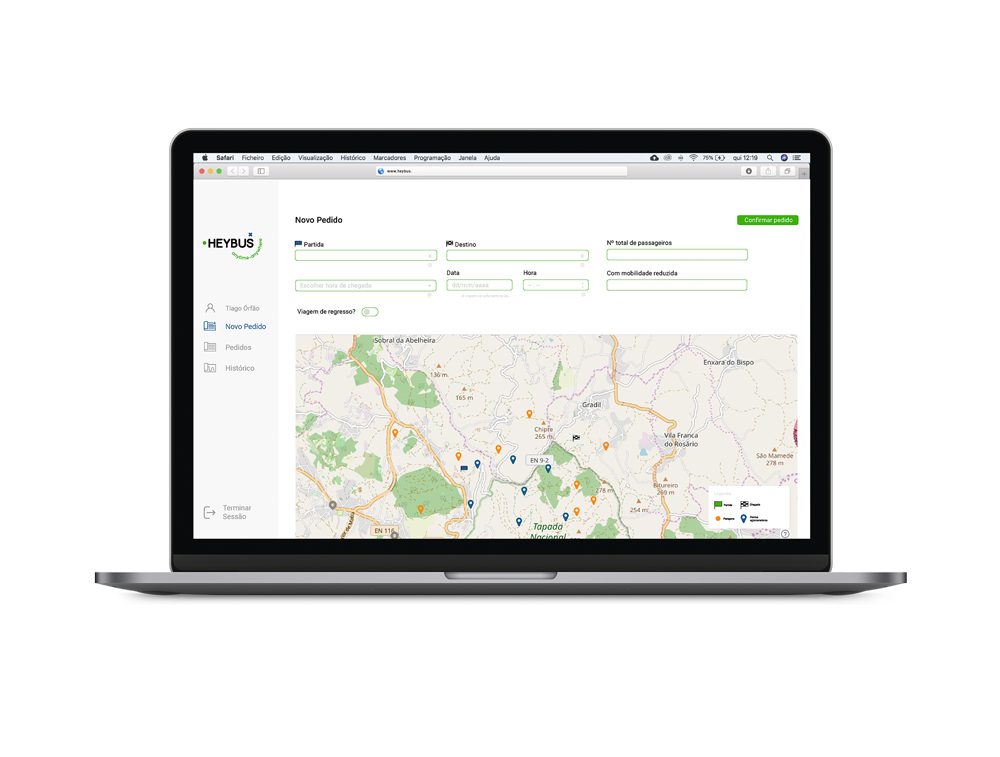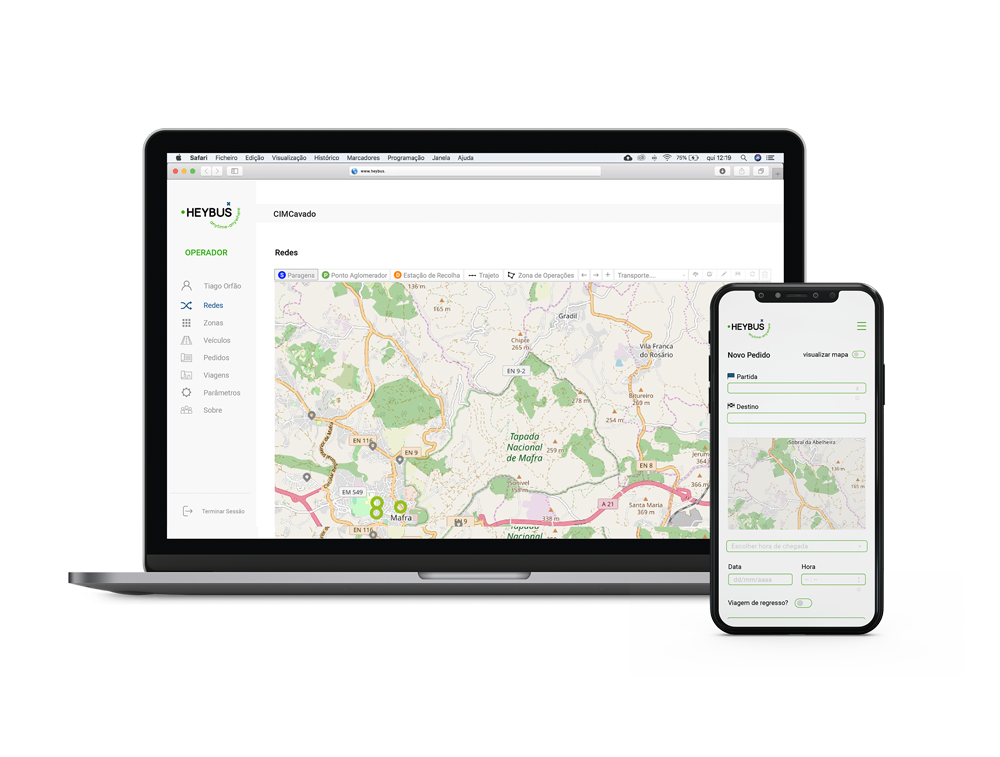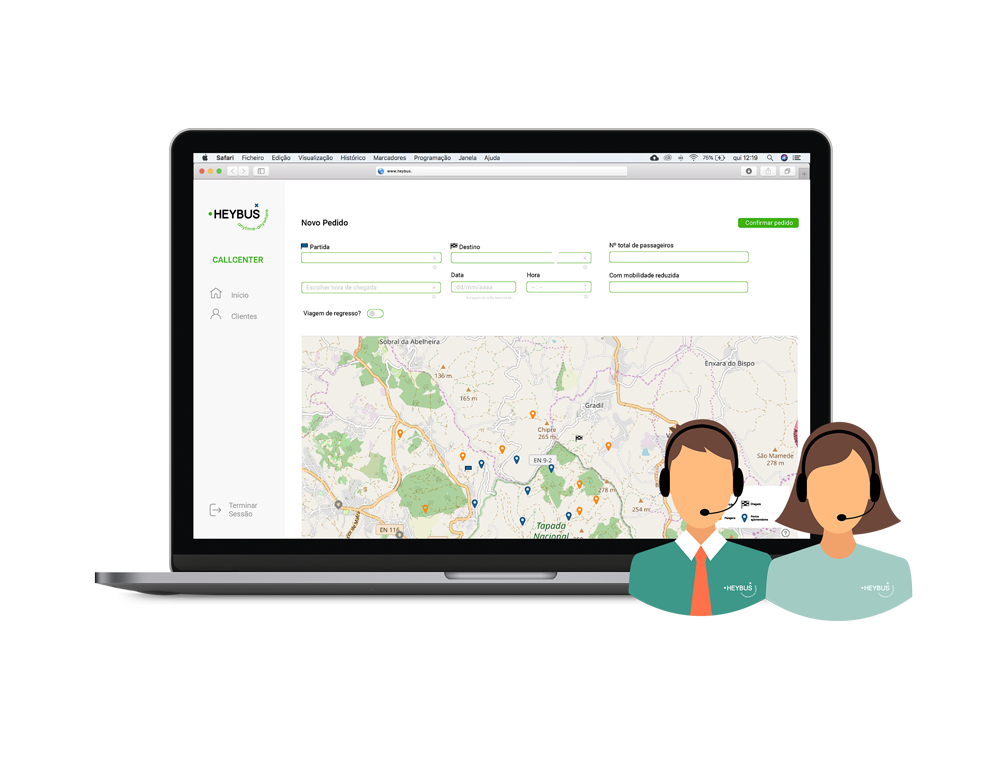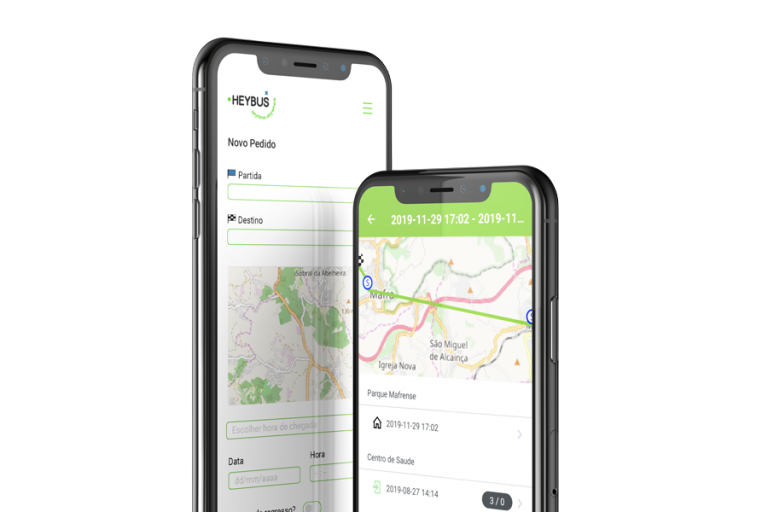heybus

Demand Responsive Transport Platform
The DRT have their legal framework in the Decree-Law No. 60/2016 of September 8, a diploma that is a manifest effort of the government to clarify the rules to be applied in this type of systems, which seek to meet the need to provide an adequate transport service in areas with low population density and personalized to the needs of passengers, particularly in situations of reduced mobility.
The design of the platform allows the application of any DRT model and considers usability issues in order to ensure easy interaction with users.
- The HeyBus platform ensures all the procedures inherent to a DRT system, from the communication made by passengers to the provision of the transport service.
- The platform contains functionalities to support customers, transport operators and system coordination, ensuring the management of travel requests, the organization of services and the definition/optimization of routes in the context of a DRT network.
- To ensure interoperability between systems, OPT develops the necessary interfaces for communication between the HeyBus platform and other systems.
The different functionalities of the platform are described below:


BackOffice Functionality
Allows the operator to enter all technical data required to create routes and define stops, interfaces, zones and fares, as well as entering information about the fleet and its capacity, drivers and users. It is also possible to interact directly with a map to define stops and create routes automatically.
Customer Support Functionality
The customer support module ensures the receipt, registration and management of trip requests that can be made via the internet. It includes a passenger App, which allows passengers to place orders wherever they are, over the web. It also allows tracking at any time.
Call Center Functionality
The service can be requested through a phone call. The platform allows the reception and registration of requests made by the call center and their confirmation to customers. The registered requests are communicated to customers after validation together with relevant transportation information. Integration with the call center software is also ensured.

Driver Support Functionality
The drivers’ App allows access to pick-up and drop-off points, a map with routes and other relevant information (schedules, routes). The drivers can also communicate with the central and add requests during the trip (subject to validation by the system to avoid prejudice to the pre-established routes).

Route planning and cost optimization
The system relies on a route optimization algorithm according to pre-set parameters that allows real-time route optimization and optimization of operating costs. The goal is to satisfy as many requests as possible with the lowest cost, shortest waiting time and shortest distance between stops.
Cost Calculation
The calculation of costs associated with the service allows to assess the cost of each trip, ticket cost for the passenger, the amount to be paid by the transport authority and amount to be paid to the operator. Reports will be produced with these listings.
Monitoring and Follow-up
The platform produces reports on the operation of the service, which can be parameterized according to the client’s needs. These reports allow inferences to be made about trips made, about the origins/destination matrices of the trips, about the users’ profiles and also about the costs. The platform records data relative to origin/destination pairs, planned and realized trips, vehicle operating costs, amounts paid by passengers, passenger attendance, and it is possible to extract any kind of report associated to this data, namely the points of greatest use of the network and the costs and revenues associated to the network operation.